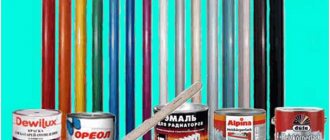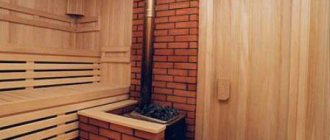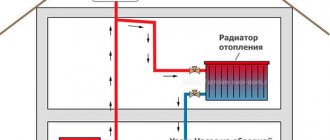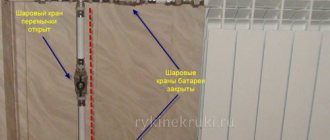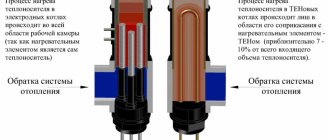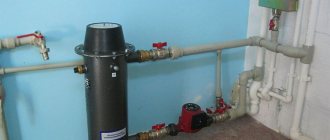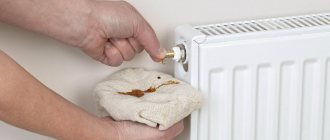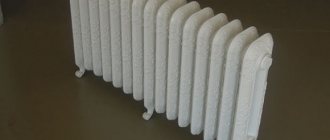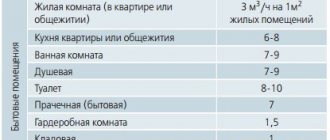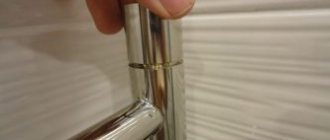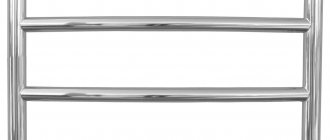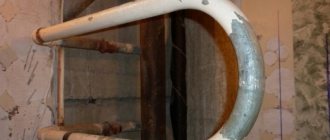We paint the heated towel rail in the bathroom bronze or chrome
A heated towel rail is not just a useful, but also a convenient device that allows you to heat your bathroom. In addition to the useful functions it performs, the heated towel rail must have a beautiful appearance so as not to spoil the interior and maintain it in perfect condition. To do this, the heated towel rail in the bathroom is painted.
Before starting work, you need to prepare the necessary materials and tools. Let's consider the sequence of painting work.
Features of painting pipes and heated towel rails in the bathroom
The two main factors to consider when preparing for painting are high temperature and high humidity.
Most bathrooms contain more water in the air than other rooms in the house. Excess moisture in the bathroom increases the risk of rust formation on metal heated towel rails, so when painting them it is advisable to use paints with an anti-corrosion effect. If the dryer is made of plastic, then regardless of the paint chosen, it is not in danger of corrosion. Another important aspect to pay attention to is the high temperature. Hot water constantly circulates through the pipes of the heated towel rail, heating them up to 80°C. This means that the selected paintwork material must be resistant to heat.
In addition, the resulting layer must be sufficiently resistant to abrasion. Otherwise, towels and other things hung to dry on the coil run the risk of becoming dirty.
What you need for painting
To carry out the work of painting a heated towel rail in the bathroom as quickly as possible, prepare yourself :
- sandpaper;
- flute brush (narrow and wide) or roller;
- primer;
- detergent (or solvent);
- gloves;
- putty knife;
- rags for wiping away stains;
- screwdriver or set.
Since the dryer gets very hot during operation, a special paint is required for application (standard paint for walls, floors and ceilings will not work, it quickly cracks and falls off the surface of the pipes).
For coating heating radiators and heated towel rails, the optimal choice is silky-glossy enamel, which can withstand temperatures up to 180-220 degrees.
Main types of paints (average cost 150-170 rubles per 1 liter):
- Alkyd enamel is resistant to negative influences in the form of constant temperature changes. It has an unpleasant odor, which is especially noticeable when the surface dries.
- Acrylic enamel - looks beautiful, comes in many colors, and is durable.
- Water-dispersion paint - dries quickly, absolutely safe for the human body, long service life.
The color of the enamel is chosen to match the interior and depends on individual wishes. Chrome paint for heated towel rails is very popular, adding a touch of chic to the interior. Bronze or gold shades can also be used - they look beautiful and rich.
Beautiful shades can be created using paints of greenish, bluish and beige (pink) colors.
It is not recommended to use white enamel. At first it looks beautiful, but after six months the aesthetic appeal will be lost. The pipes and heated towel rail will turn a pale yellow color due to constant temperature fluctuations.
Preliminary work and preparation of tools
You need to start painting the heated towel rail after preliminary treatment of its surface. If this is not done, the paint will quickly crack, peel off, or rust will appear through the layer, and the coating will become completely unusable.
Tools, devices, related materials
To prepare the surface of the structure and paint itself, in addition to paint and varnish, you will need:
- gloves;
- putty knife;
- wire brush or piece of sandpaper;
- Screwdriver Set;
- pliers;
- flute brush – 2 pcs. (narrow and wide);
- pile roller;
- paint sprayer (if necessary);
- adhesive primer with anti-corrosion properties;
- solvent or any detergent;
- rags.
It is best to use a brush with natural bristles. Then the application and distribution of the layer will be uniform, without streaks, omissions or unsightly streaks. Instead of a brush, you can use a roller with a coat of short pile.
If pipes need to be painted quickly and evenly, then use a pneumatic device - a paint sprayer. But in this case, you need to paint the structure before its installation, or cover all adjacent areas on the wall with a special painting film. The film must be secured well. Spray primer or paint on all sides of the heated towel rail.
But the standard way to paint heated towel rails is to remove them from the wall using screwdrivers and pliers. Then the whole process is carried out - cleaning to metal, degreasing, priming, painting, complete drying. Only after this is the structure installed back in its place by screwing the screws into their original sockets.
Before painting, it is best to remove the heated towel rail with pliers and a screwdriver Source polotentse-sushitel.ru
A heated towel rail without shut-off taps is removed with an angle grinder during the non-heating season Source remboo.ru
Preparing the heated towel rail
Painting a heated towel rail bronze or any other color requires preliminary work . If a thin layer of enamel is applied to its surface, the surface will remain imperfect, and after a while rust may appear on it.
Use sandpaper to remove the top decorative layer throughout the dryer. Carefully handle pipe bends and cracks in the old paint layer to level the surface.
Ideally, if you want to beautifully paint your heated towel rail in chrome or bronze, it is recommended to completely remove the entire decorative layer. If it is a chrome layer, then it must be removed completely, since the paint will adhere very poorly to it.
Removing the top layer from heating radiators and heated towel rails is a long task, but it is worth it. In the future, painting the old product will be much easier.
After removing the top layer, the dryer is thoroughly wiped with a cloth and a cleaning agent to degrease the surface and remove remaining particles from it. The next step is applying a primer to the surface of the product.
Choose a primer that can withstand high temperatures . For example, the GF-21 primer has proven itself well. Also suitable are NOVA and CO primer enamels and Eckart. Apply them in a thin and even layer. Then leave the heated towel rail to dry for 3-4 hours.
Painting in Ral and Terma colors/palettes
Absolutely any radiator can be painted in RAL color, unlike galvanic coating, which is available only for some models of heated towel rails. Painting a design radiator is done at no additional charge, and the cost of painting a heated towel rail depends on the model and size, on average 15-20% of the cost of a heated towel rail in white (basic) color. We offer a choice of colors from the RAL palette or the special Terma palette. Colors can be either glossy or matte. Some colors from the Terma palette are textured, with relief and roughness. For some models, radiator design, for example, Case Slim, it is possible to apply a pattern, install glass and mirrors. Painting warranty - 8 years.
Painting a heated towel rail
Shake the paint thoroughly beforehand to obtain a homogeneous mass. How can you paint a heated towel rail in the bathroom? To do this, use a natural bristle brush .
Some types of enamels require mixing in several stages.
When applying paint to the surface of the heated towel rail, try to spread it thoroughly over the surface and do not allow smudges to form. Application of several layers is required , and the interval between these stages should be at least 40-60 minutes. Upon completion of painting, leave the heated towel rail to dry for a day (some recommend leaving it for 3-5 days).
Beginning of work
Modern materials from which heated towel rails (coils) are made are highly durable, reliable, and do not lose their external luster throughout their entire service life. But old plumbing fixtures, especially those that are already covered with several layers of paint, have long lost their beauty and former functionality. It is this that has to be restored by first cleaning the rough coating down to metal. If the preparation is done poorly, the new coat of paint will quickly fall behind.
It is important to know where to start working with a heated towel rail. The first step is to prepare a set of screwdrivers to remove the device from the wall. First you need to turn off the water and let the coil cool completely, because it is heated. If you apply paint directly to hot metal, it will dry out instantly and the finished coating will not be durable. In addition, the evaporation of solvents from the paint will begin to occur more intensely, which means that harm to health will increase.
It is best to plan the painting of the heated towel rail during the seasonal shutdown of hot water. This will help prevent flooding of neighbors even in a situation where the coil does not have a separate shut-off valve. Thus, all actions for painting the device are carried out after dismantling the heated towel rail and cooling it to room temperature.
Useful tips
Some useful tips on how to paint a heated towel rail in your bathroom without making mistakes.
- For painting, you can use not only a brush, but also a spray bottle. In some cases, a spray gun is the preferred choice, since it allows you to apply paint in a perfectly even layer and at the same time saves its consumption.
- Is it possible to paint a hot heated towel rail? No! It needs to cool completely. And it is not turned on until the enamel is dry. It is advisable to transfer this work during the shutdown of hot water in residential buildings.
- If the purchased enamel turns out to be too thick, dilute it with a solvent, which is sold at any hardware store.
Choosing a water heated towel rail
Choosing the right heated towel rail is a whole science, and especially so with a water heated towel rail. The shape, size and even the location of the bends play a role here, and there are also a decent number of technical characteristics that also need to be taken into account.
Specifications
The operating pressure in the DHW system should be in the range from 0.3 atm to 6 atm. The pressure in the centralized heating system greatly depends on the area, but is rarely higher than 10-12 atm (this is in high-rise buildings). Select water heated towel rails in accordance with these parameters.
Before choosing a heated towel rail, you can also pay attention to such an indicator as the maximum temperature. For hot water supply, this figure is rarely higher than 60°C; for heating, few people give 80°C. From this point of view, all stainless steel dryers are suitable - their maximum temperature is about 105-110°C. However, there are emergency situations when water is supplied heated to a hundred or even higher, so this reserve will not hurt.
Deciding on the form
Water heated towel rails come in different shapes. All of them can be divided into several groups:
- U or U shaped. The simplest in form and having the lowest cost. The disadvantages include their small “usable” area, as well as the not very large amount of heat that they can generate. You can't hang a lot of things on them. But such heated towel rails, if sized correctly, can “take” the place of an old one of a similar shape without modification.
- Snake, coil or M-shaped. A slightly more complex shape, more bends. Accordingly, there is more usable area and heat generated. They are also not very difficult to connect and have a low price.
- Ladder. A heated towel rail consisting of a number of horizontal bars united at the edges by vertical collectors. The crossbars can be straight, or in the form of a snake. Such a device usually has two connection methods - side and bottom. A more complex form requires a well-chosen scheme, otherwise it will not work. In addition, due to the high material consumption, the cost of ladder heated heated dryers is several times higher than that of coils.
- Non-standard complex shapes. There are unusual heated towel rails that look more like designer decorations than plumbing fixtures. Their prices are also far from low, and most of them are delivered “to order.” Problems often arise with their connection - you need to choose the right circuit, so consultation with a competent specialist is necessary, since plumbers from the housing office are unlikely to cope with such a task. No, they will connect, but whether everything will work is the question.
Choosing a heated towel rail according to its shape is both simple and difficult at the same time. You need to consider how and where you can install your favorite design. At the same time, do not forget that you will have to connect it to a riser, which means pulling pipes along the walls to it. Moreover, most likely, the gasket will be hidden, that is, it will be hidden in the wall, which means it will be necessary to ditch them or install false hay.
Selecting sizes
You need to choose a heated towel rail based on the available space for installation. The biggest questions usually arise when choosing the size of the “ladders”. They can be very tall. You should definitely take into account the ease of use of this device. Its top can be located at the height of the wrist of your outstretched arm or slightly lower (approximately 1900-2000 mm). Where the bottom edge ends is up to you to determine.
It’s a little easier with snakes and U-shaped heated towel rails. Their upper edge is usually placed somewhere at the height of human growth. This way, all the crossbars are within reach and don’t interfere too much.
It is also worth considering that the dimensions of the heated towel rail are also reflected in the location of the inlet connections. The wider/longer the device, the greater the distance between the nozzles, which means that it is impossible to do without altering the outlets.
Materials
The most common material from which water heated towel rails are made is stainless steel. But this metal can also be different. Ideally, the AISI 304 brand and its analogs are used (in the table). Stainless steel heated towel rails of this brand last a long time, since they do not corrode and plaque does not settle on their walls.
A stainless steel heated towel rail can have a matte surface or a mirror finish (the surface of the pipes is polished); there are also painted enamels of different colors. The most common color among colored ones is white, but upon request you can choose from a fairly wide palette. Specific colors vary by manufacturer.
There are budget heated towel rails on the market made of black steel, usually galvanized. Their service life is very short - only a few years. Their surface can be chrome-plated or painted. In conditions of high humidity in the bathroom, both coatings are very short-lived.
There are also copper heated towel rails. The feasibility of their installation is a big question: copper is a chemically active metal, and there is certainly plenty of iron in the water niche. This means that copper will degrade quite quickly. Not as fast as when paired with aluminum pipes, but still... If the fate is also the very considerable cost of a copper heated towel rail, then the possibility of a quick failure of this device is not at all what one would like to hope for.
That is, in fact, choosing a heated towel rail based on the material is simple - it’s stainless steel. There really is no alternative to it yet.
Which models are better
Let's start with choosing heated towel rail models. As you know, there are ladders and simple M and U shaped ones. These M and U shaped ones are made from a single piece of pipe. It is simply bent to the required shape. That is, if a high-quality pipe is used, such a heated towel rail will last a long time.
Ladders and other complex models are welded. Their service life is determined by the quality of the weld - in most cases, leaking begins in the seams. No matter how bitter it is to admit, it is mostly Russian-made heated towel rails that leak. German or any other European countries do not suffer from this disease. It's all about the welding. Yes, all stainless steel is welded by TIG welding in an inert gas environment. Only in Europe they cook with supercharging, which is why the seam turns out to be boiled on both sides. Domestic manufacturers, in order to save on expensive gas, cook without pressurization. As a result, the seam is welded only from the outside and, at the slightest error in execution, it leaks.
No one says that it flows 100%, but it does leak quite often. That is, when buying a domestic “ladder”, you run a significant risk of getting a leak in about a year. The good news is that the warranty period is usually much longer - about 3-5 years, but the warranty is only valid if it was installed by a company that has the right to work with utility networks and you have an acceptance certificate for the heated towel rail, signed by a REU representative. At the same time, no one, by the way, can guarantee that the next heated towel rail from the same company will not leak...
So it turns out that if you approach the choice of a water heated towel rail from a practical, and not from an aesthetic, side, then it is best to take a simple coil if you really don’t like the U-shaped ones.
Manufacturers
All companies that produce water heated towel rails also produce electric ones. A heating element is installed in the same housing, coolant is poured in, and the ends are sealed. So finding an electric bathroom dryer is not at all difficult - there are more than a dozen Russian manufacturers alone, and there are a lot of models.
What to look for when purchasing
Having decided on the shape, you will need to choose the heated towel rail from which particular brand you want. In general, everything is not easy here. As they said, German and European factories in general have proven themselves to be excellent. But they have a significant disadvantage - a very high price. Therefore, you basically have to choose from Russian manufacturers. Today there are more than enough of them and the model range is largely repeated. So how to choose? You need to look at the following parameters:
- Check geometry. There should be no distortion in the cross-section of the pipe. It should be perfectly round, only deformation is allowed in places of bending. If the shape of the towel dryer is symmetrical, there should also be no deviations in its geometry.
- Find the stamp that shows the name of the company and the grade of steel from which the heated towel rail is made. All self-respecting manufacturers label their products.
- Inspect the thread. It should be cut evenly, the grooves are all the same depth, without notches..
- If there are welding areas, the seams should be smooth, without sharp edges or jagged edges.
- Look inside the pipe. If a seam is visible there (a darker, smooth stripe), this heated towel rail is made from seam pipe. If the quality of the pipe is high, this is not scary, but no one can guarantee this quality - our manufacturers purchase Chinese rolled metal. Everyone knows how their quality is. So it is better to find a heated towel rail made from seamless pipe.
- If you like a product that meets all the criteria, check whether it has a certificate of conformity. It is better not to take the device without it.
- Another mandatory document is a technical passport indicating the manufacturer, warranty cards, etc. The seller must fill out this passport correctly and put stamps where required.
Painting of metal, galvanized and polymer pipes
Metal pipes must first be cleaned of old paint and rust. A preliminary layer of primer is applied on top, which not only allows the top layer of paint to be well fixed, but also increases the service life of the pipes.
There should be no accumulated condensation on the pipes during the application of enamel. Galvanized pipes do not require painting . As for polymer ones, they are painted only to make changes to the interior of the room.
Plastic pipes are coated with paints that do not contain acetone or aggressive compounds such as NTs, ML.
Decorative box (screen)
I really like this method, it is often used even after installing new chrome heated towel rails. The decorative box is a lattice that is placed on top of the pipes. Warm air flows through this grille, and the coil perfectly performs its main function. There are a great many options for decorative boxes. Their installation is also simple, some of them are simply put on top of the pipes.
Photo from the site https://avatars.mds.yandex.net
Budget box option
Unfortunately, many boxes cost serious money, but if our goal is to save money, we can make it ourselves from cardboard. You can also cut out the lattice pattern yourself. For example, in the shape of a vine or an inscription.
Mirror effect paint
Chrome paint is used to create an original decorative layer, which in appearance resembles metal polished to a mirror shine. This effect is achieved due to the components included in the composition. Chrome plating is a fairly expensive service, so doing the work yourself is a great opportunity to save money.
The history of chrome plating
A mirror emulsion, which is applied in compliance with a whole set of rules and conditions, creates a specific coating that completely imitates perfectly polished metal. This effect is created due to the fact that the special paints contain the smallest particles of the metal itself, as well as a unique varnish. It is thanks to this composition that when applied, a thin layer is formed, which forms a very smooth and shiny surface on almost any object. The range of applications of this new product is increasing every year, and the popularity of this invention is only increasing.
Chrome products have always attracted attention with their shine. Chrome plating technology developed rapidly in the mid-twentieth century. This type of coating has become very widespread in plumbing. With proper care, this type of item always pleases the eye with its brilliance and irresistibility.
At one time, chrome plating was used extremely widely in the automotive industry. North American automakers especially distinguished themselves by this in the 50s and 60s of the last century. If you look at the cars of those years, you will notice that they literally shone with an abundance of chrome. Bumpers, moldings, side view mirrors, many overhead parts - everything is covered in chrome. Aesthetically it looked great, while providing a fairly good anti-corrosion coating.
However, achieving such an effect was possible only when manufactured in a factory and with strict adherence to technology. Deviation from the technological process threatened that the chromium would peel off from the metal. There was another drawback at that time - chrome plating could only be applied to metal surfaces.
Progress does not stand still. Today, chrome plating of various surfaces is possible. However, real chrome plating still remains the lot of manufacturing enterprises. This is due to the fact that the application of chromium metal is an electrical process.
An alternative to the technology of applying metallic chrome is chrome effect paint. Two options are possible here. This is the use of compositions using a traditional spray gun and liquid in cans. The first option can be divided into simple painting and using heat treatment.
Types of chrome paints
When choosing paint with a mirror effect, you need to take into account the features and properties of the solutions presented on the shelves of construction markets. There are two main groups, which include all materials used for chrome painting.
One-component compositions
Most often, these coloring agents are sold in cans and are not suitable for all types of work; they have their own advantages and disadvantages. The first include the absence of the need for special tools for applying liquid chrome (the packaging is already adapted for spraying), as well as compactness and ease of storage (the paint in cans is hermetically sealed and will not dry out). Inexpensive one-component chrome-effect paints are sometimes packaged in cans.
The disadvantages of these materials are the following:
- the resemblance of a surface painted with one-component chrome paint in a can or can to real polished metal in most cases turns out to be distant;
- the process of painting by spraying is quite complicated, a good result is possible only if all the subtleties of the technology are fully observed;
- due to lightning-fast drying, the material sometimes simply does not have time to adhere to the base, as a result, the coating peels off even with weak mechanical stress;
- Purchasing chrome-effect aerosol paint to cover large surfaces is an impractical step, since canned formulations are more expensive per gram.
Two-component paints
Such solutions are usually sold in cans and are made on an epoxy or acrylic base. The process of working with them takes more time, since before use the base composition must be mixed with a hardener, and after painting, a protective layer of varnish must be applied to the dry surface.
The advantages of two-component chrome paints are very significant:
- the resemblance of the painted surface to real metal is very reliable;
- the coating has high wear resistance;
- painting for chrome with a two-component composition is relatively inexpensive;
- The coating is heat-resistant.
These are the materials that are used in professional activities.
How to work with a chrome heated towel rail?
If a modern heated towel rail does not fit into the bathroom interior, its appearance can also be changed. Not every paintwork material is suitable for chrome: most either slip off or are quickly erased from the surface of the product. You will have to sand or sandblast it to remove the chrome plating down to bare metal. Afterwards, you can prime and paint the coil as usual.
If you don’t want to carry out such serious preparation, you can buy high-quality Tessarol or Hammerite and apply it directly to the chrome, although the price of the work will be quite high. Before painting, there is no need to sand or prime – you can simply degrease the product with any solvent.
Painting a heated towel rail is not a very difficult or tedious task; it can be done independently. A new product will last a long time if you choose high-quality paint, so there is no need to skimp on material.
Having a heated towel rail in your bathroom is very useful. This device heats the room, dries clothes, and warms your towel while you shower. Plus, modern models can become a very important attribute of interior design, adding some zest. However, over time, the device may lose its original appearance. Therefore, painting a heated towel rail is often the solution that can save you from the problem of an unsightly coil.
Of course, if the dryer not only lost its original appearance, but also began to work frankly poorly, there can only be one solution - replace it. However, as a rule, everything is fine with their reliability, but the aesthetic component fades over time. Therefore, it is enough to simply update the coil and give it some minor cosmetic repairs by simply painting it.
- 1 Materials and tools
- 2 Preparatory work
- 3 Painting
- 3.1 Useful tips
Composition and characteristics of the emulsion
As noted earlier, today there are two main types of chrome paints.
Single-component paints are available in spray cans. Chrome paint in cans has become widespread among ordinary amateurs when they need to paint a small product that does not require a perfect mirror shine. The second type is intended for professional painting. Here the formulations are produced in cans and include two components.
Let's consider the option of the composition in cans. Chrome mirror paint for metal is just one of the types of paint available in spray cans. The range of such paints itself is quite wide. Manufacturers offer a variety of chrome effect paint colors.
The most widespread are special formulations with aluminum powder. The can in this case contains microscopic particles of aluminum. Such emulsions contain nitrocellulose base varnishes. The varnish plays the role of a reliable fixative, giving durability to the dried paint. To create a mirror effect, the composition includes special components that help create a reflective property and uniform distribution of aluminum powder on the surface to be painted.
Types of mirror paints
Chrome effect paint is available in several options that differ in structure. Each variety involves its own technology for preparing the mixture and applying it to create a mirror effect.
Powder version
This composition is a crushed mixture, the components of which include hardeners, film-forming resins, pigments, special additives and modifiers. The advantages of this material:
- Durability. The coating is one of the most durable.
- Strength. The surface can withstand various mechanical impacts.
- Decorative. Painting allows you to get an excellent mirror effect.
On a note! To do all the work yourself, you will need special equipment for powder coating, in particular a heat treatment oven. Although all the necessary devices can be purchased or made with your own hands, this will require considerable effort and money.
Powder coating makes the surface resistant to strong temperature fluctuations, corrosion and chemical influences.
The application of such paint has a certain scheme:
- The product being processed is thoroughly cleaned.
- Anti-corrosion treatment and degreasing are carried out.
- The primer is laid.
- The part dries well.
- The composition is sprayed.
- The product is sent to the oven.
Due to the fact that modern powder materials do not require high processing temperatures, this method is becoming increasingly accessible for home use.
One-component solutions
The one-component composition is a fairly common chrome paint in cans. Product manufacturers claim that chrome plating using this option is not particularly difficult.
Indeed, the aerosol variety allows you to avoid the use of complex equipment, and besides, the cost of this paint makes it accessible to literally everyone. Although the price may vary depending on the manufacturer.
The solution has significant disadvantages:
- The chrome effect that many people expect does not always live up to expectations. In most cases, the surface acquires a light silvery tint.
- Complex application technology. The process requires compliance with many nuances and rules; any flaw will lead to damage to the decorative layer.
- This option is only suitable for painting small items.
Spray paint Cyclone Chrome
There are several recommendations for using such compositions:
- It is better to abandon cheap materials and give preference to foreign manufacturers.
- Applying an aerosol is a very difficult process, so before use it is necessary to practice to understand the principle of spraying.
- The big problem is drips. They indicate that the installation technique was chosen incorrectly, as well as the required distance was incorrectly defined.
- This spray paint can be silver or gold in color, depending on the dye used. Glass, plastic and even wood lend themselves well to processing.
- If subsequent varnishing is intended, the composition is selected especially carefully, and compatibility tests are required. The fact is that some types of varnish destroy the chrome layer.
On a note! An alternative to this option could be simpler paint. It is also sold in cans, but has a matte silver finish. Working with this composition is much easier, because there is no need to achieve a mirror reflection.
Two-component composition
It is essentially a chrome liquid paint. This option includes a base and hardener, which are thoroughly mixed before use. The excellent technical characteristics of this product make it very popular.
Positive qualities of the material:
- Similar to polished and mirror surface.
- Wear resistance. The coating is additionally protected with varnish.
- Heat resistance.
But the workflow will require much more effort than in the previous version.
Two-component paint and protective varnish Chrome Effect
Materials and tools
Of course, you can’t just take a brush, the first paint that comes to hand, and start painting your heated towel rail. This type of work requires careful approach and preparation. Plus, first you need to arm yourself with everything you need. Namely, tools and materials:
- Sandpaper;
- Brushes (only with natural bristles);
- Primer;
- Protective gloves;
- Detergent;
- Screwdriver Set;
- Putty knife;
- A clean rag (cotton) or paper towels.
Of course, the most important component of the renovation will be the paint. But not ordinary, but special. Whatever one may say, a heated towel rail tends to heat up to a high temperature, and therefore the coating must withstand it.
Silky-glossy alkyd enamel has proven itself most well, which is precisely used for painting heating radiators, that is, radiators. Its properties are such that the coating can withstand heating up to 180 degrees Celsius. This will be more than enough.
It would be a mistake to use plain enamel, as this will cause the material to crack very quickly, after which you will have to paint the dryer again.
If you are thinking about color, then you should focus on your own preferences, the theme of the interior, and the style features of your bathroom. You can easily find paints that will imitate gold or bronze, or a chrome surface. Or you can opt for ordinary colors like blue, black, red and so on. Don't forget about the ability to combine colors. Due to this, you can paint the coil, for example, in the color of your favorite flag, the color of your favorite team, and so on.
But what color it is not recommended to choose exactly is white. And even if we are talking about specialized high-quality paints. Their problem is that they quickly lose their original whiteness. Over time, the surface will become yellowish, and this will obviously not be much fun for you.
Unusual Effects
Thermochromic materials have earned the name “chameleon paints” due to their special qualities. Such coatings can change their appearance under the influence of temperature changes, for example:
- initially colored paint becomes invisible;
- when the temperature is heated or lowered, colorless paint takes on a certain shade;
- Due to changes in ambient temperature, the coating may change color completely.
There are compounds that can produce any of these effects every time the coating is exposed to heat or cooled, and some are designed for a single “reincarnation”. They are called, respectively, reversible and irreversible.
There are materials on sale that, when painted in chrome, give the coating a matte finish. When producing such paints, a special component is added to the composition to reduce the reflective potential of the coating. This paint is used to chrome plumbing fixtures, furniture fittings and much more. Matte chrome looks strict and elegant.
Electroplated / chrome
Chromium plating is the coating of one metal by another by electrolysis. It is a labor-intensive process and therefore expensive; the cost of chrome radiators is 2-3 times more expensive than painted ones. But the result is a mirror-like surface, unlike polished stainless steel, which does not lose its shine or fade over the years. A catalyst is added to a large container with water to enhance electrical conductivity and 2 copper frames are lowered, the first with chrome, the second with a metal part that needs to be coated. The frame with the coating is connected to the DC generator, to the “+” terminal, and the frame with the part is connected to the “-” terminal, the generator is turned on. The coating ions, under the influence of current, pass into water and settle on the metal part. Chrome warranty - 3 years.
Painting various surfaces
Chrome effect compounds can be used to paint different types of materials. The general principles of operation for all bases are similar, but some points may differ.
Working with metal
This type of finishing is most often used for metal. The surface should be chromed as follows:
- The element is thoroughly cleaned of contaminants.
- Anti-corrosion treatment and degreasing are carried out.
- Damaged areas are puttied and sanded.
- The part is again cleaned of dust.
- A layer of primer is laid.
- After complete drying, black paint is applied, it serves as the base. It is impossible to create a mirror finish without a base layer using a simple method at home.
- The base is polished. For this, a soft abrasive is used; damage to the layer must not be allowed.
- The selected composition is prepared for work. The aerosol in the can is shaken thoroughly and for a long time; if it is a liquid composition, it is diluted and poured into the spray gun.
Attention! It is impossible to ideally apply the coating under chrome with a brush or roller; only spraying gives the desired result.
A better visual effect can be achieved by heat treatment of powder paint.
Plastic processing
When working with plastic, the following technology is used:
- The surface is carefully prepared and polished to ensure impeccable smoothness.
- A layer of black paint is applied and polishing is carried out again.
- The surface is heated with a construction hairdryer and treated with a chrome compound.
- After complete drying, polishing is repeated. If required, varnish is applied.
Chrome plating at home does not always give the result that is obtained in industry, but the prospects for the development of this area are broad.
Recommendations for using paints
Each type of emulsion provides a certain range of areas where they are recommended to be used. So it is with chrome types of dyes . There are a number of recommendations for using this type of emulsion:
- The best results are obtained from formulations from well-known global manufacturers. It is better to refuse cheap options from unknown brands;
- Applying the composition requires certain skills. Before painting the product, it is necessary to conduct training;
- Training is also necessary to prevent smudges, this very significantly reduces the visual appeal of the final look;
- It is not recommended to use this type of dye on flexible plastic;
- If you intend to further coat the painted product with varnish, then you must first select the appropriate varnish. Otherwise, the paint coating may be damaged, which will lead to the need to repeat the painting process.
Following these recommendations will reduce work time and also save money.
The process of painting plastic surfaces
For work you will need a paint sprayer, a hair dryer, spatulas and planes, which are used to clean the surface at the preparatory stage.
Preparation
First of all, you will need a thorough wash. This applies to both new parts and those that need restoration.
If there is such a need, the surface is cleaned of the old coating, treated with sandpaper, degreased (wiped with alcohol) and leveled with putty, and then brought to a smooth state with fine sandpaper.
For plastic treated with varnish, cracks in the coating are very common. In this case, you will have to work on eliminating them using coarse sandpaper.
The surfaces prepared in this way must be primed, spraying the composition in a thin layer to avoid drops and streaks.
Coloring
There are two ways to create a chrome coating for plastic parts.
- The surface is painted black, polished to perfection, treated with alcohol and heated using a hair dryer. Paint is sprayed onto the heated base, and after drying, it is polished again to a mirror shine.
- Varnish is applied to the black-painted and dried base, dried again, polished, and then a very thin layer of paint is sprayed under high pressure. When it dries, repeat the procedure as many times as necessary. The part is placed in a special dryer where the temperature is maintained at 60 °C and kept for one hour. This is followed by a thin layer of varnish, after about 20 minutes - a second one (at this stage the coating becomes shiny and glossy), after another quarter of an hour the varnish is applied a third time. After final drying, the surface is polished.
How to prepare surfaces for painting?
Stages of preparing a metal structure for painting:
- check the serviceability of the pipe, make sure that there are no leaks on its body and at the points of connection to the communications leading to water (if a leak is detected, it is eliminated before starting painting work);
- turn off the hot water supply or wait until the end of the heating season (since elevated temperatures may interfere with the polymerization process);
- remove the old layer of paintwork with sandpaper or using a special paint solvent (underneath it may be hidden pockets of corrosion, in addition, old and new paints may belong to different groups that are incompatible with each other);
- carefully inspect the surface, apply a special solvent to the rusty pipes and remove the rust (if there are heavily corroded areas on the heated towel rail, it should be dismantled and replaced with a new one to avoid a break in the near future);
- degrease and dry (this can be done using a universal solvent, acetone, gasoline or white spirit).
As for structures made of polymer materials, before painting they are sanded to remove the surface glossy layer that interferes with good paint adhesion. There is no need to try to degrease polystyrene or PVC pipes, since most organic solvents used for this damage and deform the plastic.
If it is possible to dismantle the coil, then it is better to use it. In this case, painting will be much more convenient and you will not have to wash the walls from splashes of paint.
Metal work
There are also two methods used to paint a car body. To use the first one, you need to proceed as follows:
- clean the surface from dirt and dry;
- fill the imperfections and rub problem areas with fine-grained sandpaper, completely remove all dust;
- prime the surface and wait for the composition to dry;
- apply a layer of black paint;
- polish the surface;
- Spray a thin layer of chrome plating material with a spray gun, dry and repeat the action the required number of times;
- The last stage is varnishing.
The second method of painting chrome with your own hands is popular among car owners. This is a good option if you need to paint alloy wheels, give them a fresh look and a mirror shine. For this, chrome powder paint is used. The material has high protective properties: it perfectly resists rust, is heat-resistant, and has a long service life.
The preparatory stage, as in the first method, begins with cleansing and ends with a primer. Next, powder dye is applied using a spray gun, and the part is placed in an oven where the material is polymerized.
Review of popular manufacturers
Chrome paint has gained quite a lot of popularity. And this popularity is growing every day. Therefore, we will focus on the most popular cans:
- RUSH Power, a fairly inexpensive paint with a price of no more than three hundred rubles. It has a good sprayer and can give the desired effect with just one coat of paint. However, this type of paint is not suitable for use in auto detailing; this can is more suitable for applying graffiti.
- Bosny CHROME is also a budget option that can be used for painting small metal parts. To achieve a more lasting effect, the use of varnish is recommended.
- Chrome Effect is the most popular paint among car enthusiasts today. Not the cheapest option. However, this manufacturer gives the most worthy appearance of the final product, which is most similar to real chrome plating.
The wide range of types of chrome paint that exist today, as well as a huge range of colors, allow even an ordinary person to apply chrome paint without special training.
Other Applications
When creating original interiors, mirror paint is used to cover walls and ceilings. They always work using a sprayer. Brushes and paint rollers are not suitable for painting with chrome finish.
Otherwise, the dyeing technology does not differ from conventional finishing methods. The material is used in the production of souvenirs (chameleon paint), Christmas tree decorations and coloring of various decorative elements.
The use of the described compositions is called diffuse chrome plating and is the simplest and most affordable way to achieve a mirror effect. Alternative options are only feasible in industrial production conditions, and the cost of these services is high.
Source
